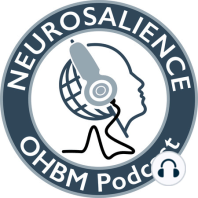10 min listen

Neurosalience #S3E11 with Lily Mujica-Parodi - Moving from mapping to circuit modeling of the brain
Neurosalience #S3E11 with Lily Mujica-Parodi - Moving from mapping to circuit modeling of the brain
ratings:
Length:
83 minutes
Released:
Feb 8, 2023
Format:
Podcast episode
Description
In this discussion, we cover her work on characterizing the variability of coherence as it relates to aging and how this coherence is increased by providing subject with ketones - an alternate source of energy to glucose. We then go into her work in modeling brain circuits and determining where the circuitry is altered across trajectories of disorders. In this context, we briefly discuss her work characterizing the effects on amygdala activation by different composition of inhaled perspiration - either that produced in a fear state vs that produced through exercise. Lastly, we discuss her lab’s work on neuroblox - a simulation program for testing circuit models of the brain and how it may open up the diagnostic value of brain imaging data.
Guest:
Lily Mujica-Parodi, Ph.D. is Director of the Laboratory for Computational Neurodiagnostics (LCNeuro) at Stony Brook University. LCNeuro's research focuses on the application of control systems engineering and dynamical systems to human neuroimaging time series (fMRI, MEG, EEG, NIRS, ECOG), with neurodiagnostic applications to neurological and psychiatric disorders.
One of LCNeuro’s primary goals is to identify key points of failure in the regulation of neural control circuits which, depending upon how they break, lead to signs and symptoms that cluster as distinct psychiatric diagnoses. As a test case for this approach, her lab is working to understand how the prefrontal-limbic circuit “computes” potential threat in the face of incomplete sensory data, across a clinical spectrum that ranges from pathological fear (generalized anxiety disorder, phobia, post-traumatic stress disorder, paranoid schizophrenia) to recklessness. A second direction at LCNeuro considers fMRI connectivity as the solution to an optimization problem imposed, in part, by metabolic constraints at the mitochondrial scale. Her group uses biomimetic modeling to predict trajectories, based on biological “rules” of energy optimization, which are then validated against data. Experimentally, they expand and contract neurons’ access to energy while observing consequent self-organization and re-organization of networks. The hope is that this work will have important implications for understanding brain aging; specifically, the epidemiologically observed impact of insulin resistance on cognitive decline.
Guest:
Lily Mujica-Parodi, Ph.D. is Director of the Laboratory for Computational Neurodiagnostics (LCNeuro) at Stony Brook University. LCNeuro's research focuses on the application of control systems engineering and dynamical systems to human neuroimaging time series (fMRI, MEG, EEG, NIRS, ECOG), with neurodiagnostic applications to neurological and psychiatric disorders.
One of LCNeuro’s primary goals is to identify key points of failure in the regulation of neural control circuits which, depending upon how they break, lead to signs and symptoms that cluster as distinct psychiatric diagnoses. As a test case for this approach, her lab is working to understand how the prefrontal-limbic circuit “computes” potential threat in the face of incomplete sensory data, across a clinical spectrum that ranges from pathological fear (generalized anxiety disorder, phobia, post-traumatic stress disorder, paranoid schizophrenia) to recklessness. A second direction at LCNeuro considers fMRI connectivity as the solution to an optimization problem imposed, in part, by metabolic constraints at the mitochondrial scale. Her group uses biomimetic modeling to predict trajectories, based on biological “rules” of energy optimization, which are then validated against data. Experimentally, they expand and contract neurons’ access to energy while observing consequent self-organization and re-organization of networks. The hope is that this work will have important implications for understanding brain aging; specifically, the epidemiologically observed impact of insulin resistance on cognitive decline.
Released:
Feb 8, 2023
Format:
Podcast episode
Titles in the series (80)
OHBM Neurosalience: An introduction to the podcast by OHBM Neurosalience